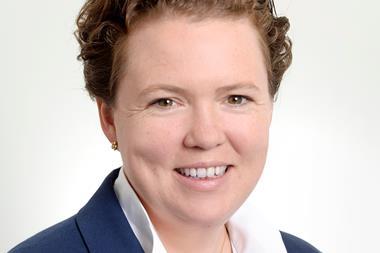Groups like Climate Action 100+ can help index managers to target their investment heft in engagement with individual companies
Key points
- Index managers still need their own corporate engagement programmes
- These internal resources will be ever more important as investors focus on delivering net-zero targets
- This level of internal resource will be tested when it comes to assessing companies’ plans for meeting net zero
The premise of Climate Action 100+ (CA100+) is simple: more than two thirds of the world’s emissions are produced by 167 companies. As many of those companies are not only quoted but also have some of the largest market capitalisations, asset owners and managers can be an effective tool in mitigating climate change.
Founded in 2017 following the Paris Agreement, CA100+ groups over 615 investors managing $55trn (€47trn) in assets. It is co-ordinated through five regional networks and is supported by a global steering committee. The aim is to pool shareholder voting rights and debt financing negotiating skills to enact targeted and focused engagement to get key companies to respond to global warming.
Ben Pincombe, head of stewardship, climate change for PRI, and PRI’s lead for CA100+, describes stewardship as a “powerful way of getting companies to change their behaviour”.
Much of the drive to work with CA100+ has been led by asset owners, particularly large pension schemes, which has in turn led to asset managers taking their stewardship responsibilities more seriously. For asset managers, effective stewardship is resource intensive, particularly for index providers, because their investment universe is so large.
Building an effective stewardship programme requires a sustainable investment team to identify the key issues that will create the greatest impact. The next step is to design an engagement programme, which then has to be implemented and monitored.
Working with a group like CA100+ can reduce some of the heavy lifting. The group will determine which campaigns it will run and then assign different roles to asset owners and managers. The group produces tools and guidance such as a benchmark, which allows asset managers to compare companies across sectors and regions.
Investors in particular companies play different roles in particular campaigns – some lead the project while others collaborate. Determining the investors capable of striking a good dialogue with the company is also an important consideration. Pincombe says: “These are based on the ownership profiles with a preference towards investors with significant holdings in companies because they have significant leverage points.”

But while it is effective for asset managers to work together through CA100+, it is also important for asset managers to have their own agendas. Amundi works on its own engagement programmes with companies in addition to work with CA100+, says Caroline Le Meaux, global head of ESG research, engagement and voting at Amundi.
Catherine Ogden, sustainability and responsible investment manager at Legal & General Investment Managers, adds: “To deliver the greatest impact from the tools available, managers need to have structured and transparent engagements with companies, with a clear time horizon and consequences.”
To make their campaigns effective, it is not just about marshalling internal resources but also about improving the efficiency of the investment value chain.
Increasingly complex
The internal resources needed to analyse individual companies will be increasingly important as the industry moves away from setting net-zero targets to delivering them.
This level of complexity is evident in discussions on reducing Scope 3 emissions – these are the carbon emissions made not by the company but by its value chain.
CA100+ has started to focus on the strategies different industrial sectors need to use to transition towards a less carbon-intensive economy, including identifying technological barriers and other specific issues.
Setting decarbonisation goals is one thing but achieving them is another. Pincombe says: “It is easy for a company to set a mid-century net-zero target because it is far in the future.”
Hans-Christoph Hirt, head of the EOS engagement unit at Federated Hermes, says the focus now is on attaining net-zero targets by 2050.
Once a company has agreed to this target, investors will then ask them what their short, medium and long-term targets are. Pincombe says: “These targets are set across all the scopes of emissions and their alignments on these goals are then tested.”
In addition, CA100+ asks what specific actions they will take to decarbonise their business as well as asking what capital expenditure has been assigned to achieve the goals, including remuneration.
Achieving net zero will be complex and detailed, not only for a company but also for the asset owners and managers who want to ensure executive boards stay the course.
Ogden says: “As companies’ plans for achieving net zero evolve and are published, asset managers will need to assess whether they are credible and whether they meet our expectations.”
Le Meaux says it is impossible to engage with a company on an issue as significant as net zero without understanding its business model, including the bottlenecks it faces. A broad-brush strategy without the necessary detail will not be effective, she adds.
For example, BHP Billiton has recently tabled a vote on its climate-transition plan. Hirt says: “An asset manager needs to know whether the company has sufficient short-term targets in order to achieve its longer-term goal of net zero by 2050.”
A detailed assessment of these plans is needed. Hirt says managers need to be alert as to whether a company is being over-optimistic about the use of technology to reduce emissions or overly reliant on clients to reduce their own greenhouse gas emissions
For an index provider, this is a significant challenge because these types of skills tend be more associated with actively managed portfolios.
Hirt says: “Even if asset managers prioritise which areas they will address, they will need significant teams in all of the capital markets. And these stewardship teams need to work closely with investment teams to capture that knowledge of individual companies.
“Asset managers will need to decide whether their engagement process will primarily be focused on more generalised topics, such as disclosure and lower carbon emissions for a sector and whether they can focus on company-specific issues, such as complex transition plans which require a deep understanding of the business.”
Regional expertise
To help companies to achieve net-zero targets, asset managers will need to adapt their approach to take account of regional differences, particularly in the US and Asia.”
“We have to adapt our engagement to take account of the local environment and the realities facing individual issuers in order to be effective,” says Le Meaux.
Using its global network, CA100+ partners international investors with local ones, particularly in Asia and Latin America.
Topics
Towards Net Zero: COP26 and Beyond for Institutional Investors
- 1
- 2
- 3
- 4
- 5
- 6
- 7
- 8
- 9
- 10
- 11
- 12
- 13
- 14
- 15
- 16
 Currently reading
Currently readingStewardship: Heavy-lifting network
- 17
- 18
- 19
- 20
- 21
- 22
- 23
- 24
- 25
- 26
- 27
- 28
- 29
























































No comments yet